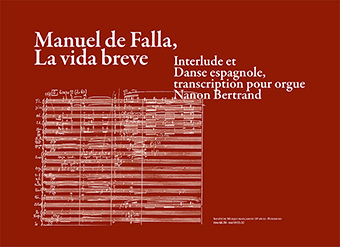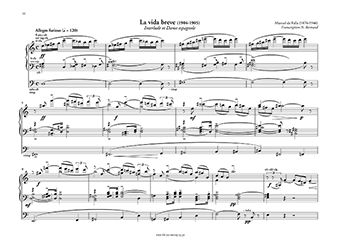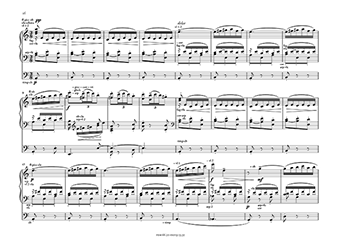Composer's Catalogue
Manuel DE FALLA
(1874-1946)
Manuel DE FALLA
La Vida breve
Interlude and Spanish dance
Transcription for Great Organ by Nanon Bertrand
Ref. PBM 66.20-SMF19 23.32
Technical info
A volume 225 x 310 (landscape format). 28-page. Transcription for Great Organ by Nanon Bertrand. Presentation in French and English.
Contents
Interlude (Act II, 1st tableau, scene 3) and Spanish Dance (Act II, 2nd tableau, scene 1 and finale) for Orchestra.
Summary
This transcription was made as part of a recital on the theme of Spain. It is based on the orchestral score and calls for a preferably symphonic instrument with a minimum of three keyboards and, if possible, a combinator, due to the many changes in registration imposed by the “colours” that have to be found to give full meaning to the musical text. Precisely, the composition of the orchestra is important: it suggests changing hues related to situations and feelings: joy, pain, anger. This is why I point out, as I go along, the entries of the most significant instruments and/or ensembles.
La Vida breve was created in France in Nice, at the Casino municipal, on April 1st, 1913; then in Paris where Falla had lived since 1907 and where he received the advice of Paul Dukas and Claude Debussy. This early work by Falla is one of the few Spanish operas that has made a name for itself in the international repertoire of the 20th century.
The press was not mistaken: “Subtle qualities of this work, worthy of Bizet's Carmen.” “The listener is transported to Andalusia, thanks to the most varied means of expression, the most nervous, the most supple too, thanks to a sensitivity, a shimmering and fluid subtlety, natural gifts of this remarkable composer.” “A musical work of the greatest interest.” “Splendid masterstroke.” “All of Andalusia, all its melancholy, all its picturesque ruggedness...”



